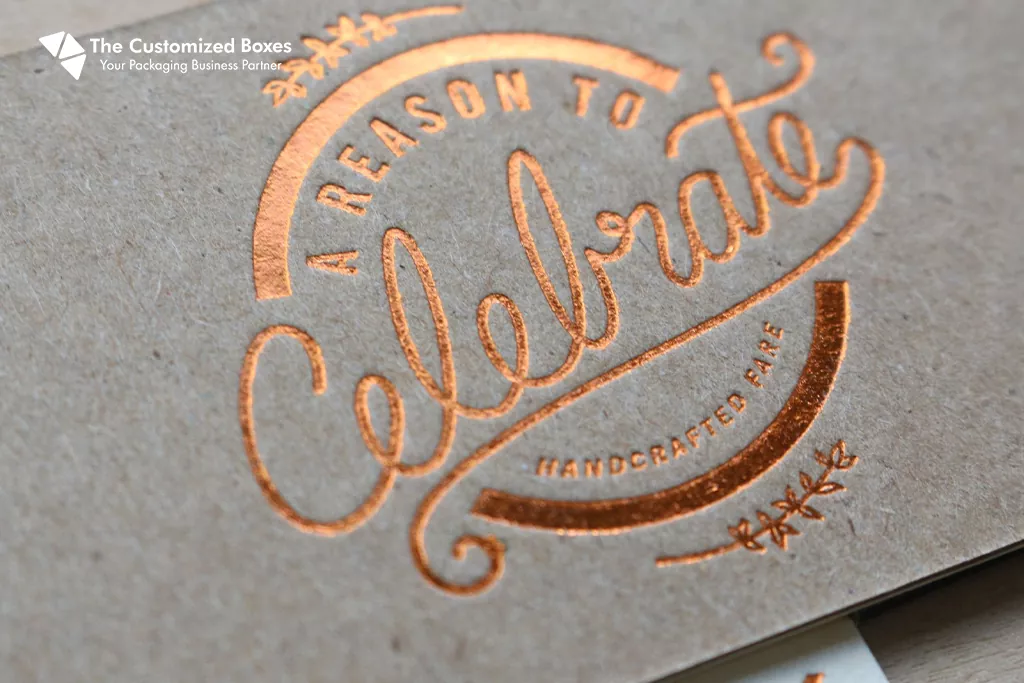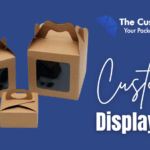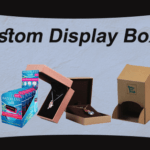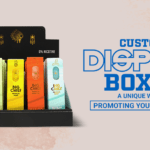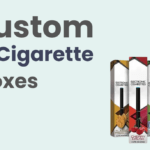Consider yourself wandering through the aisles of a retail shop.
When you reach the health and beauty area, the brands leap from the shelf, their shiny logos gleaming against black backgrounds. They emanate grace. They exude perfection.
Consider the Valentine’s Day box of chocolates you got a loved one, where the artwork lifted the contents from sweet morsels to exquisite bits of opulent bliss. Remember the wedding save-the-date cards that hung on your refrigerator? They had vivid designs that captured the festive significance of the upcoming event.
These are instances of foil printing, also known as hot stamping, in which metallic or colorful foil is applied to various materials to create a gleaming, shiny finish. Individuals and companies have been utilizing this for decades to increase the attractiveness of their products with eye-catching characteristics.
Foil stamping was once a costly, sophisticated method reserved for high-end manufacturers.
As die-cutting equipment and accessible materials have improved, foil embossing has gained popularity across various sectors for various reasons, including marketing collateral and secondary packaging, such as foldable rigid boxes.
Although it is still a pricey ornamental option, companies may find it the best.
The Beginnings of Foil Stamping
Foil stamping, which creates a beautiful shine that seems indisputably contemporary, dates back millennia.
People have always associated gold and silver (or anything metallic in appearance) with wealth, significance, and quality. Therefore they explored methods to include this wherever they could afford to.
Since fundamental stamping was time-consuming and involved unique set letters or bespoke dies, it was only used for exceptional writings. As technology advanced near the end of the nineteenth century, hot foil printing became popular for publishing businesses that wanted people to assess books by their covers.
Over time, hot stamping was applied to packaging, printed goods, and folding cartons. It dominated luxury brands, which were still associated with gold and its implications. However, during the past 20 years or more, the technique has been popular across industries.
Advanced die-cutting technology enables nearly any brand with the necessary cash to use the procedure. Look around your entire home:
- The books on the shelf
- The makeup packaging in the bathroom
- Jewelry packages
- Chocolate bins
You’ll discover some examples of foil printing.
What is Foil Stamping?
Metallic print and foil are applied to materials including plastics, paper, and cards via foil stamping, which employs heat and pressure.
It is possible to generate several textures on the media, including metal, matte, glossy, and holographic textures.
Since stamping printing doesn’t utilize ink and is thus unaffected by the color or texture of the material, it varies from pad printing and silk screening. Due to the fact that it doesn’t utilize ink and is thus unaffected by the color or texture of the medium, it is perfect for printed items with dark-colored surfaces.
Since the eighteenth century, foil printing has been used to make a variety of products, including holiday cards, baby announcements, scratch-off foil, wedding invitation designs, save-the-date cards, business cards, presentation folders, book covers, and more.
The Foil Stamping Method in Printing & Packaging
Foil stamping, also known as hot foil printing, is a process similar to letterpress and engraving in that color is applied to the paper using pressure.
When the design is finished, the necessary metal plates are produced for each individual color foil. Then, the dies are heated. The press is run numerous times to use each color separately after applying pressure to seal the foil to the paper or packaging material.
Use a different die to create the raised or embossed effect you want to finish the item with.
Individually printing real gold leaves is a thing of the past. Sophisticated, proper die-cutting equipment is now the standard, making large-scale foil embossing tasks simple and inexpensive.
The technique’s core stays unchanged:
- A unique die is manufactured and fitted to the machine to match the desired form.
- A foil (typically metallic but now available in various colors, coatings, and textures) is dispensed over the substrate while being heated and pressed against a counter plate.
- The substrate quickly passes through the machine, cutting the foil as the die-cut stamps descend.
- The extra foil is removed, revealing a clean finish.
- The completed document is handed on to the next phase.
Foil Types Most Commonly Used in Foil Processing
Various types of foil are used to provide the package with distinct optical effects, including:
-
Metallic Foil
When you consider foil printing, foil immediately comes to mind. Metallic foil, often known as metalized foil, gives your writing or area a bright, metal-like appearance. It’s perfect for adding elegance, especially when foil in gold or silver is used to complete it.
-
Pigment Foil
Pigment foil is comparable to metalized foil but lacks a metallic appearance. They are available in various colors and with matte or glossy finishes, which may make them stand out or provide a sense of luxury and tenderness.
-
Holographic Foil
These sorts of holographic foils provide a 3D rainbow appearance. Such a form of foil has been used in collections such as baseball cards, other trading cards, and promotional items.
-
Traditional Foil Pressing
There are two methods for foil stamping: conventional foil printing and digital foil molding.
The pattern is printed onto a metal plate via conventional foil embossing. This metal plate is identical to a standard die. However, it is used for foiling. It works similarly to a rubber stamp.
The die is headed, and a layer of the desired foil is put between the die and the surface underneath it. The die is then pushed against the surface, causing the foil to adhere to it in the shape of the design on the metal plate.
For designs that employ numerous types of foil colors, foiling dies need to be developed for every color. The packaging material must go through the machine twice (one for each color), so the final design will form.
During this period, you may add other effects to the foil embossing, such as an embossed edge or a raised appearance, to make the completed product stand out not just aesthetically but tactilely.
-
Stamping with a Digital Foil
Digital foil stamping, also known as digital foiling, is a process similar to traditional foil marking, except that instead of using pressure to bond the design to the product packaging design with a metal die, a digital printer uses a specific type of foil that adheres to the surface of the plan.
It eliminates the need for several runs of the material through the printer for package designs that use multiple foil colors or patterns.
One strategy is only sometimes superior to another because both will implement to get the desired effects on your packaging. If you have any questions regarding the specifics of different foil printing methods, experts will please clarify and advise you on which is best for your needs.
Perks of Foil Printing
Foil stamping has several advantages for retail display box packaging.
First and foremost, your product packaging will undoubtedly distinguish itself from the competitors. Metallic or colorful foil provides a touch of eye-catching brilliance and elegance to any box, giving it a premium appearance. When combined with additional techniques like raised or embossed graphics, the package may take on a new level of elegance.
Furthermore, foil printing is adaptable. It’s not simply for metallic lettering, but that is one of the most popular. It is durable and abrasion- and dampness-resistant. It may be applied on various stocks (for example, corrugated boxes or folding carton boxes) and keep its brilliance.
Hot foil embossing is an excellent method to make a statement and add a touch of elegance, with a brilliant and eye-catching gloss or a more subtle matte type foil printing.
What Can Foil Stamping Do for Product?
The following are a few of the alterations that resulted from the adjustments. It quickly adds elegance to your brand while attracting the attention of customers.
But the current response to the question, “What can foil printing do for a product?” is short and open: anything you want it to do.
Thanks to technological advancements, fossil imprinting is now more than just an eye-catcher. When paired with embossing, it boosts your brand. When used with debossing, it may provide stunning depth.
Metallics, while still popular, are far from the sole option, particularly among cosmetic firms. Hot stamping may give glossy or contrasting textures to the image to make it stand out. Advances in digital filing and die-cutting allow for more detailed patterns.
Ready to Use Foil Stamping in Packaging?
If you like the charm and distinctiveness of hot foil printing, use this time-honored practice to add sophistication to your packaging.
Professionals have years of expertise and know-how in developing a wide range of packaging goods that use some foil embossing and printing techniques to guarantee that your product packaging precisely captures. It will conceptualize your brand, message, and so much more.
Conclusion
Foil stamping may transform a mundane job into a professional-looking, creative asset for your brand or organization. It is a technique that lends a touch of refinement and richness to various crafts. This specialty printing method uses heat, pressure, and foil to create a glossy or matte finish to patterns or graphics.

